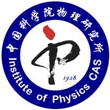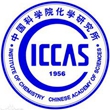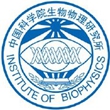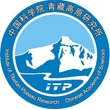Sessions 4:Geo-sciences
R. Lawrence Edwards
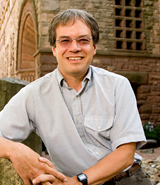
Character introduction
Positions
2015 to present Regents Professor, University of Minnesota
1998 to 2015 Professor, University of Minnesota
1994 to 1998 Associate Professor, University of Minnesota
1988 to 1994 Assistant Professor, University of Minnesota
Honors and Awards
Highly Cited Researcher 2014, 2015, 2016, 2017, 2018; Clarivate Analytics, (1 of ~180 in Geoscience worldwide; top 0.1% in terms of highly cited papers of scientists and social scientists worldwide)
Foreign Member Chinese Academy of Sciences 2015
Regents Professor 2015 to present
Geochemical Fellow (Geochemical Society & European Association of Geochemistry: www.geochemsoc.org/awards/geochemicalfellows), 2014
Gunn Chair Professor, 2013-2018 (inaugural professor)
Fellow of the American Association for the Advancement of Science, 2012
Fellow of the National Academy of Sciences, 2011
Arthur L. Day Prize and Lectureship, National Academy of Sciences
(http://www.nasonline.org/about-nas/awards/arthur-l-day-prize.html), 2011
Among top 25 most cited earth scientists worldwide (previous decade, www.isiknowledge.com), 2009 to present (as high as 2nd-most cited earth scientist in the world)
John Simon Guggenheim Fellow, 2009 (www.gf.org)
George&Orpha Gibson Chair of Earth Systems Science, 2008-2013 (1 of 2 inaugural chairs)
Science Innovation Award (N.J. Shackleton Medal), inaugural recipient, European
Association for Geochemistry, 2008 (Citation & Response: GCA 73, S15-S17, 2009)
Fellow of the American Geophysical Union, 2008
Fellow of the American Academy of Arts and Sciences, 2004 (amacad.org)
Distinguished McKnight University Professor, 2001 to present
Claire C. Patterson Award, 1999 (The Environmental Geochemistry Medal of the Geochemical Society; Citation and Response: GCA 64, 755-761, 2000)
2015 to present Regents Professor, University of Minnesota
1998 to 2015 Professor, University of Minnesota
1994 to 1998 Associate Professor, University of Minnesota
1988 to 1994 Assistant Professor, University of Minnesota
Honors and Awards
Highly Cited Researcher 2014, 2015, 2016, 2017, 2018; Clarivate Analytics, (1 of ~180 in Geoscience worldwide; top 0.1% in terms of highly cited papers of scientists and social scientists worldwide)
Foreign Member Chinese Academy of Sciences 2015
Regents Professor 2015 to present
Geochemical Fellow (Geochemical Society & European Association of Geochemistry: www.geochemsoc.org/awards/geochemicalfellows), 2014
Gunn Chair Professor, 2013-2018 (inaugural professor)
Fellow of the American Association for the Advancement of Science, 2012
Fellow of the National Academy of Sciences, 2011
Arthur L. Day Prize and Lectureship, National Academy of Sciences
(http://www.nasonline.org/about-nas/awards/arthur-l-day-prize.html), 2011
Among top 25 most cited earth scientists worldwide (previous decade, www.isiknowledge.com), 2009 to present (as high as 2nd-most cited earth scientist in the world)
John Simon Guggenheim Fellow, 2009 (www.gf.org)
George&Orpha Gibson Chair of Earth Systems Science, 2008-2013 (1 of 2 inaugural chairs)
Science Innovation Award (N.J. Shackleton Medal), inaugural recipient, European
Association for Geochemistry, 2008 (Citation & Response: GCA 73, S15-S17, 2009)
Fellow of the American Geophysical Union, 2008
Fellow of the American Academy of Arts and Sciences, 2004 (amacad.org)
Distinguished McKnight University Professor, 2001 to present
Claire C. Patterson Award, 1999 (The Environmental Geochemistry Medal of the Geochemical Society; Citation and Response: GCA 64, 755-761, 2000)
Topic: Lessons about Past and Future Climate from Chinese Caves*
Abstract A remarkable record of the history of the Asian Monsoon is preserved in calcite formations in Chinese Caves. This record now extends from 640,000 years ago to the present, with a resolution ranging from years to centuries. This record indicates large changes in the monsoon with a gross structure that follows changes in summer sunlight predicted from changes in the earth’s orbital geometry (e.g. precession, obliquity, and eccentricity). At shorter timescales, timescales ranging from years to centuries, the record shows many examples of abrupt climate change. Abrupt climate change refers to climate change that is large, affects a large geographic region, and takes place rapidly. Indeed, one example of abrupt climate change from China took place in just two years. Many of the abrupt changes observed in China have analogues at sites around the world, notably in Greenland where evidence of these events is preserved in ice. By studying the Chinese record within the context of other records around the world,we can put together ideas about the causes, triggers, and nature of abrupt events. In this way, we can use these dramatic events in the earth’s past to identify possible tipping points in a future warming world.
* This work partially supported by the 111 project of China (D19002) and U.S. NSF Grant 1702816.
** Other contributors to this research include An Zhisheng (Inst. of Earth Environment, Xi’an), Cheng Hai (Xi’an Jiaotong U.), Wang Yongjin and Kong Xinggong (both at Nanjing Normal U.) and Yuan Daoxian (Int’l Res. Cent. on Karst, Guilin)
* This work partially supported by the 111 project of China (D19002) and U.S. NSF Grant 1702816.
** Other contributors to this research include An Zhisheng (Inst. of Earth Environment, Xi’an), Cheng Hai (Xi’an Jiaotong U.), Wang Yongjin and Kong Xinggong (both at Nanjing Normal U.) and Yuan Daoxian (Int’l Res. Cent. on Karst, Guilin)
Previous Tandong Yao
Next Guoxiong Wu



